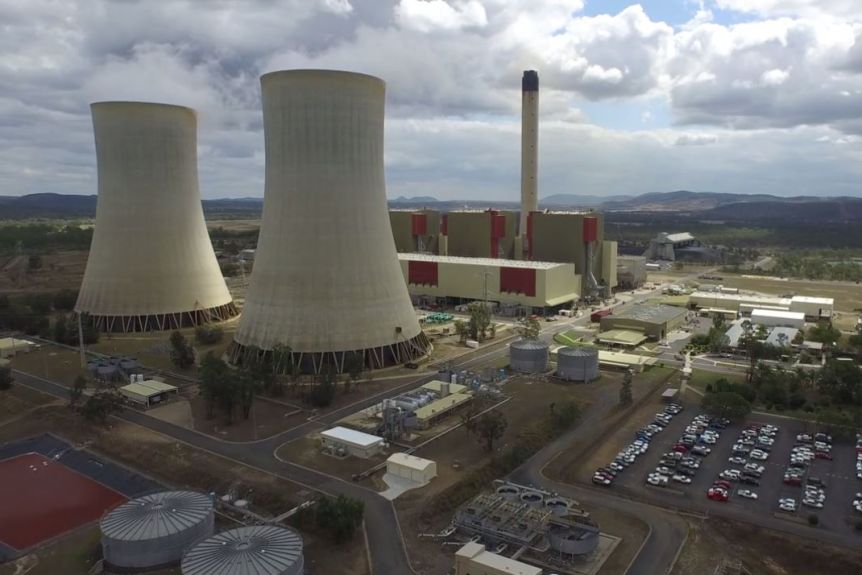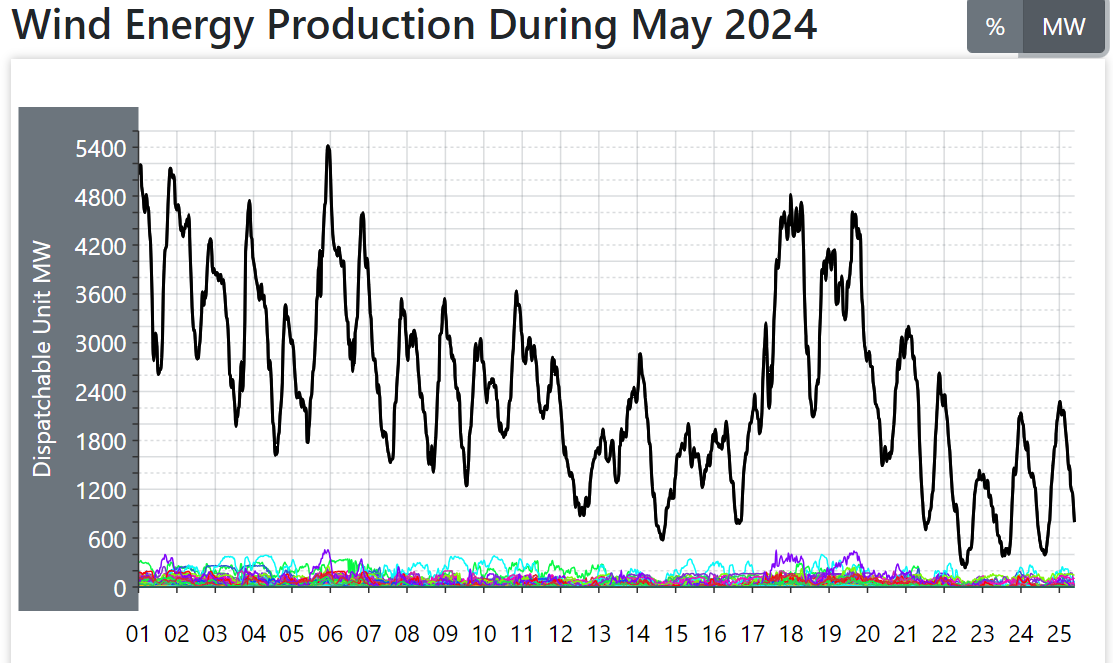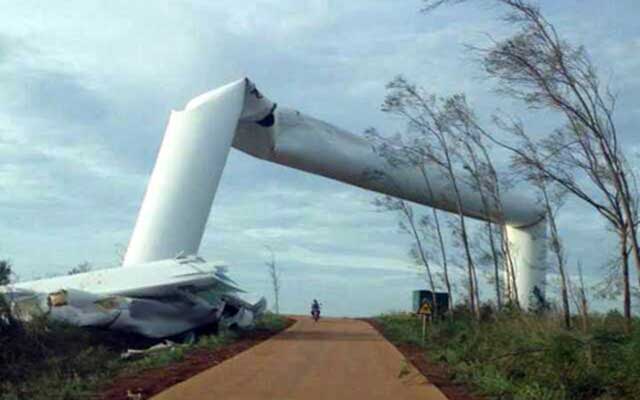Rent-seekers and the wind and sun cult who run with them are in a flat panic as they realise that their game is up. Mouthing off about an ‘inevitable transition’ to an all wind and sun powered future was always going to come unstuck. Reality has a tendency of biting back.
Every calm night (ie no sun and no wind) reveals the inherent (and natural) defect of attempting to rely on wind and solar, a defect which becomes glaringly obvious to those with the vaguest interest about where their power comes from.
That interest tends to be heightened during ‘demand management’ exercises aka load shedding (while the grid manager is in control) and mass blackouts – when wind and solar chaos reigns supreme.
Those in on the scam are evidently concerned that the next mass blackout will result in a return to energy policy sanity; hence the headless chickens approach being taken by Australia’s Energy Market Operator, among others.
Note the bluff, bluster and spin in the first piece from The Australian from those responsible.
Note also their steadfast refusal to refer to the elephant in the room: calm nights.
And their claims about building thousands of kilometres of extra transmission grid fixing the problem, fall hollow by reference to a simple graphic, courtesy of the boys over at Aneroid Energy.
Depicted above is the daily output from every wind turbine connected to Australia’s Eastern Grid – spread over an enormous expanse from Far North Queensland to Tasmania and South Australia.
Note the sudden 3,000-4,000 MW collapses from the peaks of the troughs – perfectly explained by calm weather.
Note too the troughs associated with each regular collapse show output of around 200MW and 2,000MW – out of a total notional capacity of 11,409MW.
That is, on regular occasions – dozens of times each month – Australia’s fleet of whirling wonders are producing between 1.7% and 17% of their total capacity. The missing 80 to 98% isn’t coming from mega-batteries or pumped hydro (and never will). It’s coming from coal, gas, diesel and kerosene. In that order.
No amount of huffing, puffing or spinning will ever change that fact. More batteries won’t fix it and running extension cords between States will make no difference, at all. Nor will adding the thousands of turbines and millions of solar panels promised by Labor’s delusional plans to build a “renewable energy superpower”.
On the current trajectory, Australians will be lucky to have any power, at all. Welcome to your all wind and sun powered future!
Blackout risks: A nation lost in energy transition
The Australian
Joe Kelly and Perry Williams
20 May 2024
Electricity users face a heightened risk of blackouts during peak demand in NSW and Victoria this summer, with the energy market operator forced to bid for emergency supplies amid delays in new transmission lines and renewables projects.
The prospect of holiday power outages during a cost-of-living crisis will ramp up the pre-election contest over Labor’s vision to transform Australia into a renewable-energy superpower, overhaul fuel-efficiency standards for new cars and pour billions of taxpayer funds into emerging industries.
One week after the budget handed $300 power bill rebates to every household [read: taxpayers paying themselves with the taxes they’ve already paid], a new energy market update says reliability gaps have deteriorated in the two most populous states and will decline through the decade in South Australia.
The forecast will raise concerns over a choppy transition to greener power as the bulk of Australia’s coal power stations are retired this decade, and the government proceeds with plans to deploy 32 gigawatts of renewable and clean dispatchable capacity by 2030.
The Australian Energy Market Operator blamed the worsening outlook on a series of delays, including a year-long lag in delivering the EnergyConnect power cable between NSW and South Australia and a similar delay to the state’s Central West Orana transmission line.
Multiple hold-ups to battery, hydro-storage, wind and solar projects have all added to the tighter outlook while the shutdown of gas and diesel generation in South Australia will lead to a supply squeeze in Victoria.
The revised outlook from AEMO lands amid heated debate over the role of gas, which has split the Labor Party and ignited a fresh political row with the Greens.
The government last week committed to the fuel source remaining a key part of the energy mix to 2050 and beyond.
Last week, Labor also teamed up with the Greens to ditch changes aimed at fixing the “broken” offshore gas approvals system in return for the passage of its petroleum resource rent tax changes and the introduction of tough standards reducing emissions for new passenger vehicles by more than 60 per cent by 2030.
Given the looming reliability risks, AEMO will on Tuesday put out a call to the market for emergency power supplies for NSW and Victoria to minimise the risk of blackouts during peak demand in the 2024-25 summer.
NSW faces a reliability gap of more than 1000 megawatts of power from 2025-26, which widens to more than 3000MW in 2032-33. The figures underscore the challenge for Australia of more than doubling its renewable capacity to achieve Labor’s target of 82 per cent by 2030 while keeping a lid on household bills at a time of cost-of-living stress.
“While new generation and storage capacity continues to increase, project development and commissioning delays are impacting reliability throughout the horizon,” said AEMO chief executive Daniel Westerman. [twaddle: see the simple graphic above]
Peter Dutton used his budget reply speech on Thursday to enshrine reliable and affordable energy as one of the central political battlegrounds of the next election along with housing and migration. The Opposition Leader accused Labor of betraying the public over its vow to reduce power bills by $275 a year by 2025.
Mr Dutton warned that spiralling power prices would undermine Labor’s new Future Made in Australia agenda, shutting down manufacturers or sending them offshore. He blasted the government for forcing the nation into relying on “weather-dependent energy”.
Anthony Albanese has sought to defuse anger over rising electricity bills by committing to the delivery of $300 subsidies for every household – a tactic also aimed at lowering inflation – while committing billions to the development of emerging industries critical to achieving the net-zero transformation.
AEMO pointed to a giant pipeline of green projects expected to be delivered to the market in the next decade along with unprecedented intervention from both state and federal governments to avoid a bumpy path to a renewable-powered grid.
Its updated electricity outlook does not include federal or state government energy programs nor a 280-gigawatt pipeline of proposed generation and storage projects in development stages, representing nearly five times the currency capacity of the national electricity market.
AEMO said the report highlighted a call for “timely” investment in projects to generate, store and share electricity to manage reliability risks from retiring coal plants.
A plan is also expected in NSW this week to confirm that Eraring – Australia’s biggest coal-power station – may stay open for four more years, with the NSW government working on a safety-net solution to head off the threat of blackouts.
Market executives have warned that allowing the state’s largest source of electricity – typically producing about a quarter of NSW’s electricity – would stoke prices for households and businesses buckling under high interest rates and soaring inflation.
Coal is still the dominant source of electricity in Australia, with its 20GW of capacity accounting for about 60 per cent of all power. To replace coal, Australia will need to build more capacity than the amount of coal in the system due to the intermittent source of renewable energy.
The Australian

AEMO’s summer blackout predictions give Anthony Albanese another reason for an early poll
The Australian
Simon Benson
20 May 2024
Anthony Albanese has just been given another reason to consider going to an election before Christmas.
If the energy market operator is right, the lights are going to go out across much of eastern mainland Australia over summer.
The last thing Labor would want is more colour added to the energy nightmare it is already presiding over as it prepares for an election year. But that is what is about to happen.
There are no prizes for guessing what the problem is: The failure by state and federal Labor governments to address the reliability of the national electricity market in anticipation of coal’s exit. The Australian Energy Market Operator’s report is clear.
Reliability has deteriorated in NSW, Victoria and South Australia over the past year, forcing it to warn it will have to bid for emergency power reserves to keep the lights on over summer in the two largest states of NSW and Victoria. South Australia is also again in trouble.
Once again, it is calling for new generation, transmission and storage assets such as batteries.
But then it says there are only limited locations where new supply will actually add benefit to system reliability.
It’s little wonder that the Prime Minister performed his second political volte-face of the year two weeks ago – the tax cuts being the first – when he overturned Labor’s energy policy and announced a new gas plan out to 2050.
This plan is almost indistinguishable from the Morrison government’s net-zero plan to use gas as the transition fuel.
This is an admission that Labor’s renewable energy plan just isn’t going to get the job done if keeping the lights on and prices lower are the priorities.
That he was forced to legislatively retreat last week by the Greens is inconsequential. He simply announced that he would legislate it later.
But the AEMO report highlights the desperation creeping into the government camp on energy reliability.
It’s one thing to hand out $300 to households, but this may do little to ameliorate the anger if those households don’t have power to be subsidised.
Peter Dutton’s energy plans for gas and nuclear to shore up renewables is starting to come into sharper focus. Details are being kept back, but the Liberal leader won’t be able to keep this up for long.
If reliability issues continue in the NEM, Dutton’s case for more non-renewable dispatchable power will only become stronger.
The Australian
Powering the nation on wing and a prayer
Graham Lloyd
The Australian
20 May 2024
The electricity network in Australia – a fossil fuel energy superpower – is increasingly held together with hopes, tissue paper and spit.
The latest warning from the Australian Energy Market Operator is that things are worse than was predicted only a few months ago. It is the story of the renewable energy transition.
Battery, wind and solar projects have struggled to get from promise to reality. The electricity grid network is not designed for what it increasingly is being asked to do.
The situation can only be saved by many billions of dollars worth of further investment supported by a long list of government subsidy programs.
AEMO has abandoned subtlety and all discretion. It highlights the “urgency for the timely delivery of transmission, generation and storage, and use consumer electricity resources to support the grid”.
AEMO chief executive Daniel Westerman tells us what we already know: “Project development and commissioning delays are impacting reliability throughout the horizon.”
Households, and their yet to be purchased electric cars, are now a key part of keeping the lights on in future.
Reliability risks have increased in the two most populous states, NSW and Victoria, from 2024-25 to 2027-28 and increased in South Australia in 2026-27.
The situation has become so dire AEMO will tender for “interim reliability reserves” as early as the coming year.
The long-term solution, AEMO says, lies in state and federal governments opening the taxpayer wallet through a myriad of high-cost schemes; a federal capacity investment scheme to underwrite the profitability of big projects. Progress on the stalled NSW electricity infrastructure roadmap. A Queensland energy and jobs plan. A fresh Victoria renewable energy target, storage target, offshore wind policy or investments by a nationalised state electricity commission. And further developments to support the federal government’s Powering Australia Plan commitment to increase renewable energy generation to 82 per cent of supply by 2030.
As well as a shortfall of generation projects, the AEMO report highlights two more inconvenient truths.
There will need to be new investment in ancillary services to replace the benefits of having big baseload plants operating on the grid.
“Over the coming decade, the rapid energy transition will result in a significant need for new assets and providers of these essential system services, including for system strength, frequency management, voltage control, ramping capability, and system restoration services”, AEMO says.
And, such is the state of the electricity network, there currently are limited options for where new supply can be added to make a difference when things get tight.
“Without further transmission development there are limited locations in each mainland region that can support new generation and storage that will benefit power system reliability,” AEMO says.
The report paints a picture of a low emissions transition that is being planned belatedly and on the run. The track record of delivery does not give confidence that, left unchecked, things will improve anytime soon.
The Australian
via STOP THESE THINGS
May 25, 2024 at 02:30AM



